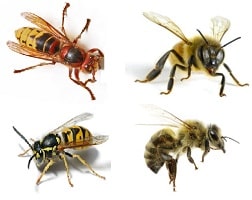What is nutrition?
We explain what nutrition is and what healthy eating implies. In addition, the most common types of nutrition and diseases.
-
What is nutrition?
Nutrition refers to the action of harnessing nutrients obtained from food . It is a biological process through which nutrients that our body needs for the proper growth and development of vital functions are absorbed from food and liquids.
Nutrition also refers to the study of the relationship between food, health, and the creation of a balanced diet combined with regular physical exercise .
With a good diet, many of the common diseases or propensities to have a certain disease, such as diabetes, can be avoided or faulted . Nutrition scholars study what are the main nutrients that cannot be lacking in a healthy diet.
-
What does a healthy diet imply?

To have an adequate diet, we must meet the following requirements:
- That energy enters the body through the absorption of nutrients such as proteins , fats and carbohydrates. They are necessary for the organism, since they are spent in high amounts through physical activity and the expense induced by the diet.
- The entry into the body of vitamins and minerals, non-energy nutrients.
- Drink approximately two liters of water per day, keeping our body well hydrated.
- Eat enough high fiber foods.
-
Types of nutrition
There are two types of nutrition, the autotroph and the heterotroph:
- Autotrophic nutrition : The first one is that carried out by plants , producing their own food. They have the ability to synthesize simple and inorganic substances to convert them into organic and more complex substances. The autotrophic create organic matter from the carbon dioxide and using chemical or light energy. Chemotrophs are those organisms that oxidize inorganic compounds to produce energy. Within the autotrophic organisms we find all plants, with the exception of fungi, which are heterotrophic.
- Heterotrophic nutrition : The feeding is done from organic substances that were already synthesized by other organisms (both autotrophic and heterotrophic ). The word heterotroph comes from the Greek “hetero” which means unequal, different, and “trophic”, food. In short, they need other organisms to live. In this group we find bacteria and animals . Heterotrophic beings obtain the energy of the autotrophs, breaking the molecules of the beings they have eaten. Carnivores also depend on autotrophs, since they need the energy their prey ate.
-
Diseases due to poor diet

There is a wide variety of diseases linked to a bad or poor diet , being able to treat excess, deficiency or poor quality. Among the most common diseases related to nutrition we can find: arteriosclerosis, diabetes mellitus, hypertension, bulimia, vigorexia, anorexia, obesity , some types of cancer , avitaminosis and malnutrition .
Having a bad or poor diet also has consequences on the teeth and mouth , since when the body does not continue to receive nutrients to restore the tissues, the oral area is the most prone to infections. When we eat too much sugar, as well as carbohydrates and starch, an acid plaque is attached to the tooth enamel that nourishes and infects them.
-
What is the nutritional or food pyramid?
The graph that represents the most important foods that should be consumed in any diet is known as a food or nutritional pyramid . In the form of a pyramid, as the name implies, food is placed in order of importance of intake.

